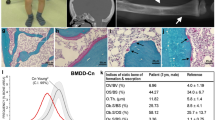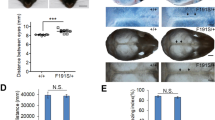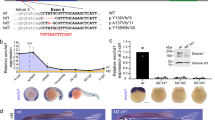Abstract
Haploinsufficiency for SOX9 has recently been identified as the cause for both campomelic dysplasia (CD), a human skeletal malformation syndrome, and the associated autosomal XY sex reversal1,2. SOX9 contains a putative DNA-binding motif known as the high-mobility group (HMG) domain characterizing a whole class of transcription factors3. We show in cell transfection experiments that SOX9 can trans-activate transcription from a reporter plasmid through the motif AACAAAG, a sequence recognized by other HMG domain transcription factors3. By fusing all or part of SOX9 to the DNA-binding domain of yeast GAL4, the transactivating function was mapped to a transcription activation (TA) domain at the C terminus of SOX9. This non-acidic TA domain is evolutionary conserved and rich in proline, glutamine and serine. With one exception4, all SOX9 nonsense and frame shift mutations described so far in CD/sex reversal patients1,2,4 lead to truncation of the TA domain, suggesting that impairment of gonadal and skeletal development in these cases results, at least in part, from loss of transactivation of genes downstream of SOX9.
This is a preview of subscription content, access via your institution
Access options
Subscribe to this journal
Receive 12 print issues and online access
$209.00 per year
only $17.42 per issue
Buy this article
- Purchase on Springer Link
- Instant access to full article PDF
Prices may be subject to local taxes which are calculated during checkout
Similar content being viewed by others
References
Wagner, T. et al. Autosomal sex reversal and campomelic dysplasia are caused by mutations in and around the SRY-related gene SOX9. Cell 79, 1111–1120 (1994).
Foster, J.W. et al. Campomelic dysplasia and autosomal sex reversal caused by mutations in an SRY-related gene. 372, 525–530 (1994).
Grosschedl, R., Giese, K. & Pagel, J. HMG domain proteins: architectural elements in the assembly of nucleoprotein structures.Trends Genet. 10, 94–100 (1994).
Kwok, C. et al. Mutations in SOX9, the gene responsible for campomelic dysplasia and autosomal sex reversal. Am. J. Hum. Genet. 57, 1028–1036 (1995).
van de Wetering, M., Oosterwegel, M., Dooijes, D. & Clevers, H. Identification and cloning of TCF-1, a T lymphocyte-specific transcription factor containing a sequence-specific HMG box. EMBO J. 10, 123–132 (1991).
Harley, V.R. et al. DNA binding activity of recombinant SRY from normal mates and XY females. Science 255, 453–456 (1992).
van de Wetering, M., Oosterwegel, M., van Norren, K. & Clevers, H. Sox-4, an Sry-like HMG box protein, is a transcriptional activator in lymphocytes. EMBO J. 12, 3847–3854 (1993).
Wright, E. et al. The Sry-related gene Sox9 is expressed during chondrogenesis in mouse embryos. Nature Genet 9, 15–20 (1995).
Tjian, R. & Maniatis, T. Transcriptional activation: a complex puzzle with few easy pieces. Cell 77, 5–8 (1994).
Chi, T., Lieberman, P., Ellwood, K. & Carey, M. A general mechanism for transcriptional synergy by eukaryotic activators. Nature 377, 254–257 (1995).
Gerber, H.-P. et al .Transcriptional activation modulated by homopolymeric glutamine and proline stretches. Science 263, 808–811 (1994).
Bours, V. et al .The oncoprotein Bcl-3 directly transactivates through κB motifs via association with DNA-binding p50B homodimers. Cell 72, 729–739 (1993).
Glaser, T. et al. PAX6 gene dosage effect in a family with congenital cataracts, aniridia, anophthalmia and central nervous system defects. Nature Genet. 7, 463–471 (1994).
Truant, R., Xiao, H., Ingles, C.J. & Greenblatt, J. Direct interaction between the transcriptional activation domain of human p53 and the TATA box-binding protein. J. Biol. Chem. 268, 2284–2287 (1993).
Clark, H.M. et al .Mutations in the coding region of c-myc in AIDS-associated and other aggressive lymphomas. Cancer Res. 54, 3383–3386 (1994).
Baniahmad, A., Köhne, A.C. & Renkawitz, R. A transferable silencing domain is present in the thyroid hormone receptor, in the v-erbA oncogene product and in the retinoic acid receptor. EMBO J. 11, 1015–1023 (1992).
Schmitz, M.L., dos Santos Silva, M.A. & Baeuerle, P.A. Transactivation domain 2 (TA2) of p65NF-κB. J. Biol. Chem. 270, 15576–15584 (1995).
Giese, K., Amsterdam, A. & Grosschedl, R. DNA-binding properties of the HMG domain of the lymphoid-specific transcriptional regulator LEF-1. Genes Dev. 5, 2567–2578 (1991).
Ferrari, S. et al. SRY, like HMG1, recognizes sharp angles in DNA. EMBO J. 11, 4497–4506 (1992).
Wigler, M., Pellicer, A., Silverstein, S. & Axel, R. Biochemical transfer of single-copy eucaryotic genes using total cellar DNA as donor. Cell 14, 725–731 (1978).
Schreiber, E., Matthias, P., Mülter, M.M. & Schaffner, W. Rapid detection of octamer binding proteins with ‘mini-extracts’, prepared from a small number of cells. Nucl. Acids Res. 17, 6419 (1989).
Author information
Authors and Affiliations
Rights and permissions
About this article
Cite this article
Südbeck, P., Schmitz, M., Baeuerle, P. et al. Sex reversal by loss of the C–terminal transactivation domain of human SOX9. Nat Genet 13, 230–232 (1996). https://doi.org/10.1038/ng0696-230
Received:
Accepted:
Issue Date:
DOI: https://doi.org/10.1038/ng0696-230
This article is cited by
-
SOX9 inactivation affects the proliferation and differentiation of human lung organoids
Stem Cell Research & Therapy (2021)
-
sox9b is required in cardiomyocytes for cardiac morphogenesis and function
Scientific Reports (2018)
-
Molecular cloning and expression analysis of dmrt1 and sox9 during gonad development and male reproductive cycle in the lambari fish, Astyanax altiparanae
Reproductive Biology and Endocrinology (2015)
-
SOX9 gene transfer via safe, stable, replication-defective recombinant adeno-associated virus vectors as a novel, powerful tool to enhance the chondrogenic potential of human mesenchymal stem cells
Stem Cell Research & Therapy (2012)
-
Molecular cloning, characterization and expression analysis of Sox9a and Foxl2 genes in half-smooth tongue sole (Cynoglossussemilaevis)
Acta Oceanologica Sinica (2011)



